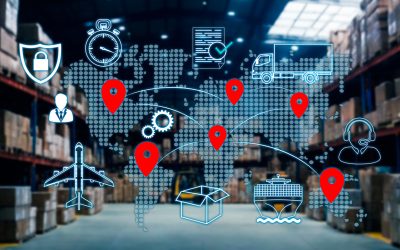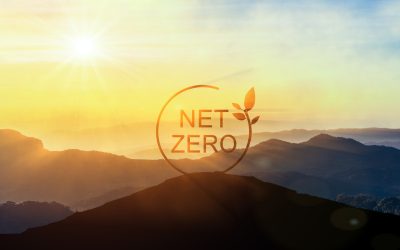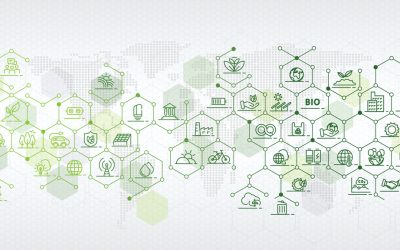
Understanding and effectively managing greenhouse gas emissions is essential in Business Sustainability. Emissions are commonly categorised into three scopes, each representing different sources of emissions and requiring distinct strategies for reduction. Scope 1, 2 and 3 is a way of categorising the different kinds of carbon emissions a company creates in its own operations, and in its wider value chain. The term first appeared in the Green House Gas Protocol of 2001. Today Scopes are the basis for mandatory GHG reporting in the UK. By comprehensively addressing these emissions scopes, businesses can make meaningful strides towards mitigating their environmental impact and advancing sustainability goals.
Scope 1 Emissions: Direct Emissions
Scope 1 emissions encompass direct greenhouse gas emissions that occur from sources owned or controlled by the organisation. These emissions typically result from activities such as:
- Combustion of fossil fuels in owned or operated vehicles
- Fuel combustion in on-site equipment and machinery
- Process emissions from industrial activities, such as chemical production or cement manufacturing
For businesses, Scope 1 emissions are often the most straightforward to measure and manage since they occur within the organisation’s direct control. Strategies for reducing Scope 1 emissions may include transitioning to cleaner energy sources, improving energy efficiency, and implementing technologies to capture and store emissions.
Scope 1 and 2 are most within an organisation’s control.
Scope 2 Emissions: Indirect Emissions
Scope 2 emissions encompass indirect greenhouse gas emissions associated with the generation of purchased energy consumed by the organisation. While these emissions occur off-site, they are still linked to the organisation’s activities and operations.
To address Scope 2 emissions, businesses can focus on increasing energy efficiency, sourcing renewable energy, and engaging with electricity providers to procure cleaner power. Initiatives such as installing solar panels, purchasing renewable energy certificates (RECs), or entering into power purchase agreements (PPAs) can help organizations reduce their Scope 2 emissions footprint.
In some cases, the solutions exist to deliver net zero for Scope 1 and 2 emissions for an organisation.
Scope 3 Emissions: Indirect Value Chain Emissions
Scope 3 emissions represent all other indirect greenhouse gas emissions that occur as a result of the organisation’s activities but are not directly owned or controlled. These emissions extend beyond the organisation’s boundaries and encompass the entire value chain, including upstream and downstream activities. Scope 3 emissions may include:
- Emissions from purchased goods and services, including raw materials, transportation, and packaging
- Employee commuting and business travel
- Use of sold products by customers
- End-of-life treatment of products and disposal of waste
Scope 3 emissions often constitute the largest portion of a company’s carbon footprint, in many businesses more than 70%, but are also the most challenging to quantify and address due to their complexity and dependence on external factors. However, businesses can still take meaningful steps to reduce their Scope 3 emissions by collaborating with suppliers, optimising transportation logistics, promoting sustainable consumption patterns, and investing in circular economy initiatives.
Businesses looking to adopt best practice will commit to tackling Scope 3 emissions as part of their plans. Mapping your emissions footprint by scale, and how much control you have over the source will be a good way to start addressing them.
Incorporating emissions scopes 1, 2, and 3 into sustainability strategies is essential for businesses committed to reducing their environmental footprint and advancing climate action. By understanding the sources and impacts of greenhouse gas emissions across their operations and value chains, organisations can identify opportunities for improvement, set ambitious reduction targets, and implement targeted initiatives to drive positive change. Embracing a holistic approach to emissions management is not only vital for environmental stewardship but also for enhancing resilience, reputation, and long-term business viability in an increasingly sustainability-conscious world.
What are the 9 Planetary Boundaries and why do they matter?
The planetary boundaries framework, first introduced in 2009 by Swedish scientist Johan Rockström and his colleagues, updated in subsequent...
Scope 3 vs. Scope 4 Emissions in Business Sustainability: Understanding the difference
In the realm of business sustainability, understanding and mitigating greenhouse gas emissions have become paramount. Among the various categories...
Scope 4 emissions: Addressing Upstream and Downstream emissions
In recent years, the conversation surrounding sustainability in business has expanded beyond just internal operations to encompass the entire value...
Understanding Net Zero
In recent years, the concept of achieving "net zero" has gained significant traction in the realm of sustainability, particularly concerning...
Embarking on a Business Sustainability Journey: Key Steps to Get Started
In today's increasingly environmentally-conscious world, businesses are recognising the importance of integrating sustainability into their...
What is Business Sustainability? Building a Sustainable Future
Building a Sustainable Future: The Key Elements of Business Sustainability In today's world, the concept of sustainability has become more than just...






